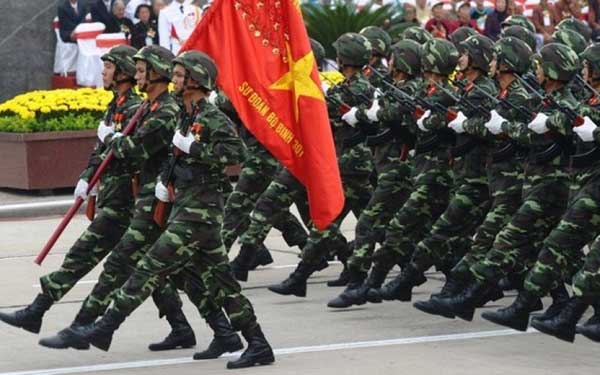Vietnam can prove to be a good buffer to contain China in the South China Sea, if India plays its cards well. In the process of strengthening relations with neighbouring nations, India has recognised the strategic value that Vietnam holds for it and is no longer shy of stating its aspirations of playing an active role in the political and security role in the Asia-Pacific. To manoeuvre towards achieving its aspirations with strategic deftness, India should display steadfastness in political will, consistent military modernisation, and a growing regional economy.
21st century has often been termed as the “Century of Asia”, but if one is questioned about which Asian country has galloped ahead in the past 25 years or so, with a major portion of its population escaping poverty, the answer would be China, or India. Which Asian economy, primarily based on rural development, would be the next dynamo? Most would once again get the answer wrong! The answer, which many overlook, and are surprised to know, is Vietnam: a country that in the 1980s emerged after decades of war, and at one time was considered as poor as Ethiopia!
Vietnam lacks the advantage of a large landmass economy, like China or India. Yet, its growth pattern has many lessons for other developing nations, especially those in the neighbourhood.
Vietnam has a population of about 100 million, and has notched the world’s second fastest growth rate per person since 1990, second only to China. In the next decade, if it continues with a 7 per cent pace, it will be considered in the same category as South Korea and Taiwan, the other Asian major economies.
Vietnam lacks the advantage of a large landmass economy, like China or India. Yet, its growth pattern has many lessons for other developing nations, especially those in the neighbourhood. Massive developments in technology and automation, for some time now, have been considered unsuitable for poor nations with labour-intensive manufacturing. Vietnam has proven to the contrary and displayed that tried-and-tested models can still work.
It has also shown an acceptance towards globalisation and an open global economy. Taking full advantage of its geographical location – it is at the doorstep of China – companies exiting China, on the lookout for low cost alternatives, have been shown open doors and minds, while other nations in the neighbourhood have not fared as well. In the 1990s, the country liberalised its trade and tariff rules, because of which, trade now accounts for 150 per cent of GDP, more than any other nation at its income level. Foreigners wishing to set up shop in Vietnam were not compelled to buy raw materials locally, a move that they welcomed, as against the mandatory local-content rules in India and Indonesia. Today, two-thirds of Vietnam’s exports are by foreign companies! Companies are flocking to Vietnam, rejecting advanced nations in EU and the Americas for being too expensive, China for its patchy rules on intellectual property rights, and India for being too complex in a maze of bureaucracy.
About 70 per cent of the population resides in the rural areas, which is almost the same as in India, as compared to only 44 per cent in China.
Foreign Direct Investment (FDI) in Vietnam was at a record high last year and has surged again this year. The first half of 2016 has seen a $ 11.3 billion being pumped in as FDI, which is an increase of 105 per cent from the same period last year; this despite a slow-down in the global economy! Vietnam, like China, South Korea, and Taiwan is planning for its sustained growth in a systematic manner, rather than in fits and starts.
It has a relatively young population, the median age being 31, in comparison with China, its immediate neighbour, which has a median age of 36 (India’s median age in 2014 was estimated to be at 28). About 70 per cent of the population resides in the rural areas, which is almost the same as in India, as compared to only 44 per cent in China. This reservoir of rural workers gives Vietnam some lead-time to build labour intensive industries to cater for the employment needs of its growing population.
Vietnam is not the only nation with a young population, there are many others, but not all, including our own, can boast of effective and streamlined policies. Investors have taken heart from the stability that Vietnam’s policies provide. The workforce is not just young, but skilled too. Public expenditure on education, as per World Bank data, is about 6.3 per cent of GDP, as against 3.72 per cent in India and a world average of 4.53 per cent. Its expenditure is well focussed to ensure maximum enrolment and achievement of minimum standards. This focussed approach has ensured that in world rankings, its 15-year olds, beat their contemporaries in USA and Britain in subjects such as Maths and Science. These educational levels have paid dividends in its factories.
Vietnam has about 600 million barrels of proven oil reserves. It is a major oil-producing nation in SE Asia, but it still has to meet its growing domestic demands through imports.
After years of conflict, followed by many years of solid growth, Vietnam has been able to shed its reputation of being a poor nation, and has today risen to be classified as a middle-income nation, a milestone indeed! There are many a lesson for India with its aspirations for being a rising economy and a regional power.
While cultural and economic links between the two nations date back to the 2nd century, shared political interests govern the present day links. India’s “Look East Policy”, linked with economic cooperation has marked an important turn in India-Vietnam relations. From around the beginning of the century, bilateral trade between the two nations has seen a steady increase, crossing the $ 1 billion mark in 2005-06; this was a major achievement, considering that a decade prior to this the total trade figures were a meagre $103 million. According to GOI data, trade volume crossed $ 8 billion in FY 2013-14, achieving the target of $ 7 billion by 2015 well in advance.
Vietnam has about 600 million barrels of proven oil reserves. It is a major oil-producing nation in SE Asia, but it still has to meet its growing domestic demands through imports. What it lacks in technical expertise in oil exploration and refineries is now being provided by India, much to the annoyance of China; in return, India would be getting a share of the oil extracted and produced. There are other opportunities in the transportation, tourism, agriculture, and defence sectors, in which India is willing, and is providing assistance, through the broad basing of its relationship with Vietnam.
Vietnam can prove to be a good buffer to contain China in the South China Sea, if India plays its cards well.
Defence is another sector in the growing strategic partnership between India and Vietnam. Apart from the diplomatic good-will visits of Indian naval ships, India has also been engaged in capacity building of the Vietnamese armed forces. The areas of focus are training, repairs and maintenance support, exchange visits between think-tanks and study tours by the militaries. While extensive economic ties were established in 1992, the current ‘Look East Policy’ has moved into bilateral military cooperation too, apart from the other sectors; this includes sale of military equipment and joint naval exercises. India has now extended a $100 million credit line to Vietnam that allows it to purchase defence equipment from it; India is selling four large patrol vessels and Vietnam has expressed an interest in procuring India’s Brahmos missiles too.
Vietnam can prove to be a good buffer to contain China in the South China Sea, if India plays its cards well. In the process of strengthening relations with neighbouring nations, India has recognised the strategic value that Vietnam holds for it and is no longer shy of stating its aspirations of playing an active role in the political and security role in the Asia-Pacific. To manoeuvre towards achieving its aspirations with strategic deftness, India should display steadfastness in political will, consistent military modernisation, and a growing regional economy.
In the evolving security calculus of the Asia-Pacific, Vietnam is the one country that is important to India’s sustained presence and role in the area; under the present government, a new maturity in India’s Asian strategy has included intensive high-level engagement with it. However, the anxiety about China’s territorial expansion and open disregard for international norms mandates that India and Vietnam improve their relations. Both countries can do much more to forge bolder diplomatic and military coordination, along with promoting vibrant trade and investment policy in the textile, agriculture, pharmaceutical, energy, oil, and gas sectors.
It is crucial for India to get its Vietnam policy right for a truly engaged role in the Asia-Pacific.





